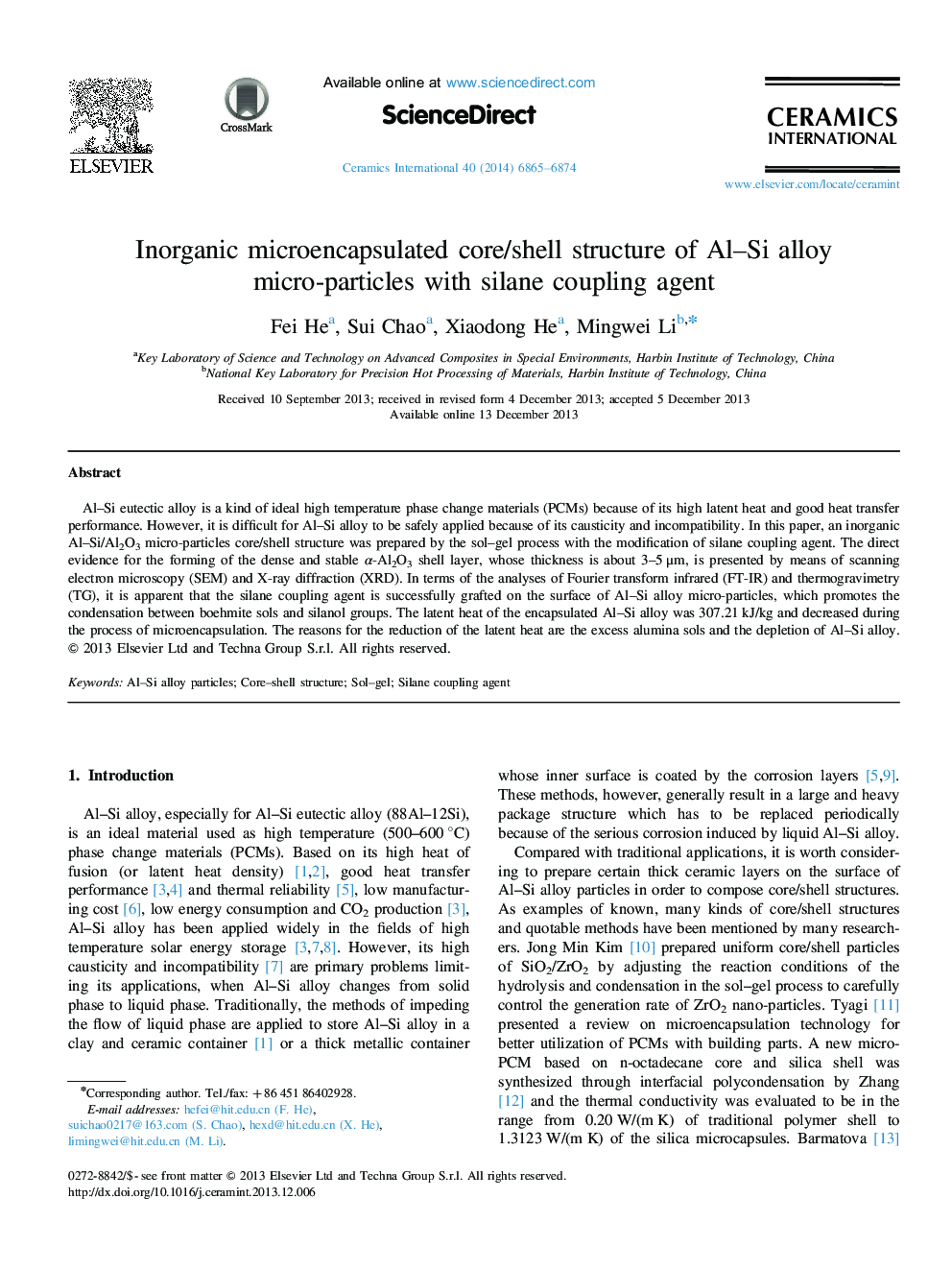| Article ID | Journal | Published Year | Pages | File Type |
|---|---|---|---|---|
| 1461146 | Ceramics International | 2014 | 10 Pages |
Al–Si eutectic alloy is a kind of ideal high temperature phase change materials (PCMs) because of its high latent heat and good heat transfer performance. However, it is difficult for Al–Si alloy to be safely applied because of its causticity and incompatibility. In this paper, an inorganic Al–Si/Al2O3 micro-particles core/shell structure was prepared by the sol–gel process with the modification of silane coupling agent. The direct evidence for the forming of the dense and stable α-Al2O3 shell layer, whose thickness is about 3–5 μm, is presented by means of scanning electron microscopy (SEM) and X-ray diffraction (XRD). In terms of the analyses of Fourier transform infrared (FT-IR) and thermogravimetry (TG), it is apparent that the silane coupling agent is successfully grafted on the surface of Al–Si alloy micro-particles, which promotes the condensation between boehmite sols and silanol groups. The latent heat of the encapsulated Al–Si alloy was 307.21 kJ/kg and decreased during the process of microencapsulation. The reasons for the reduction of the latent heat are the excess alumina sols and the depletion of Al–Si alloy.
